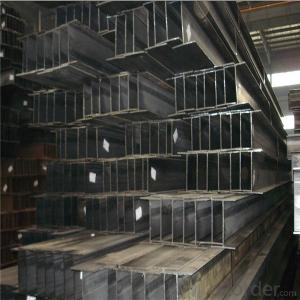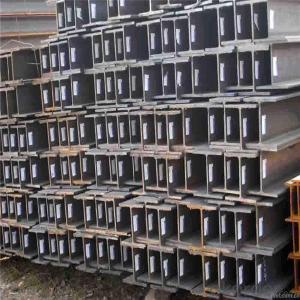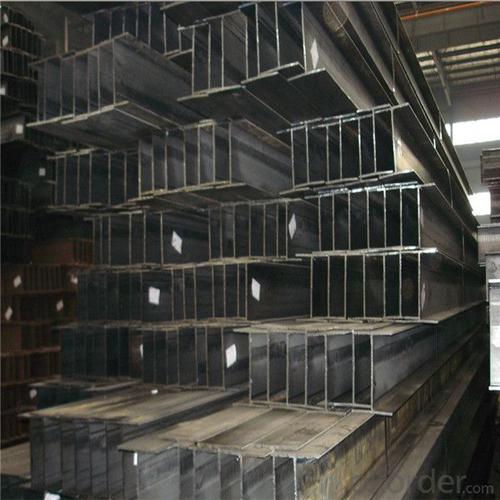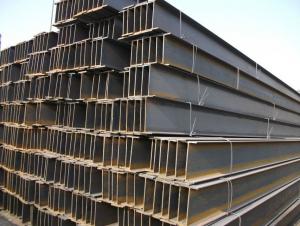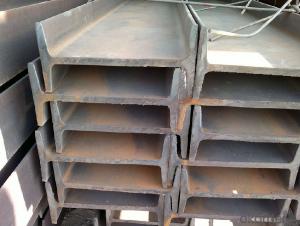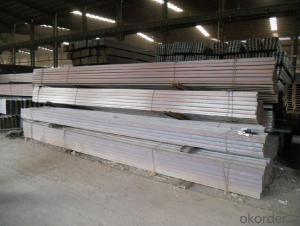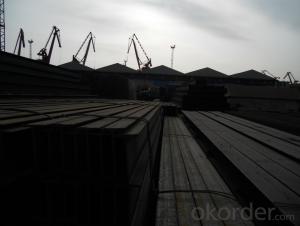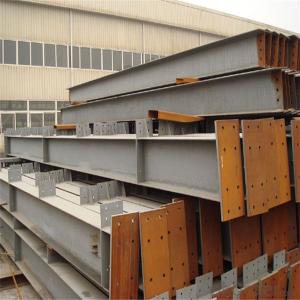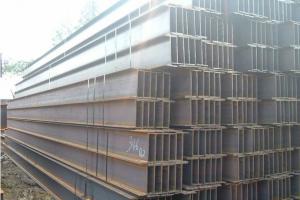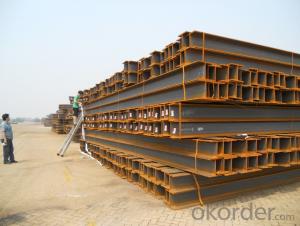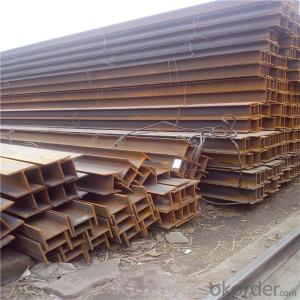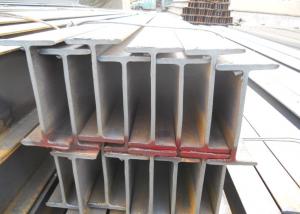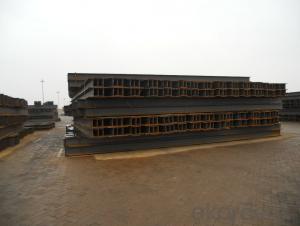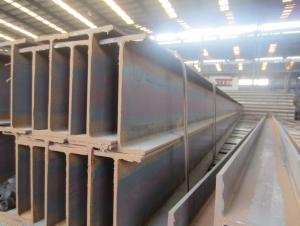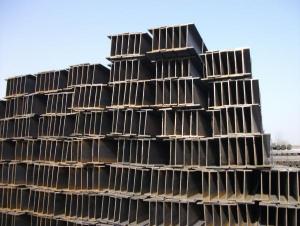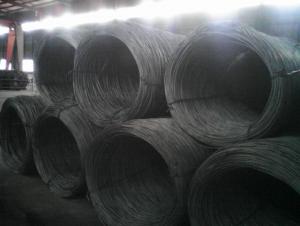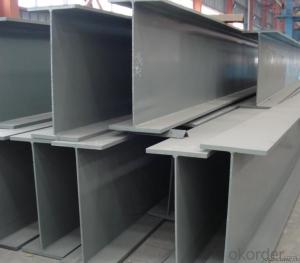Hot Dip Galvanized H-Steel Beams Supplier
- Loading Port:
- Dalian
- Payment Terms:
- TT OR LC
- Min Order Qty:
- 135 m.t
- Supply Capability:
- 150000 m.t/month
OKorder Service Pledge
OKorder Financial Service
You Might Also Like
Specification
Quick Detail
Place of Origin: | Tianjin, China (Mainland) | Grade: | Q235B | Technique: | High Frequency |
Application: | Building construction,Bridge construction etc. | Length: | 6.0meters,9meters,12meters | Standard: | ASTM |
Flange Width: | 100-750mm | Flange Thickness: | 3.0-10.0mm | Web Width: | 50-250mm |
Web Thickness: | 2.3-8.0mm | Brand Name: | Liye |
We can provide qualify goods,competitive price and speedy delivery.
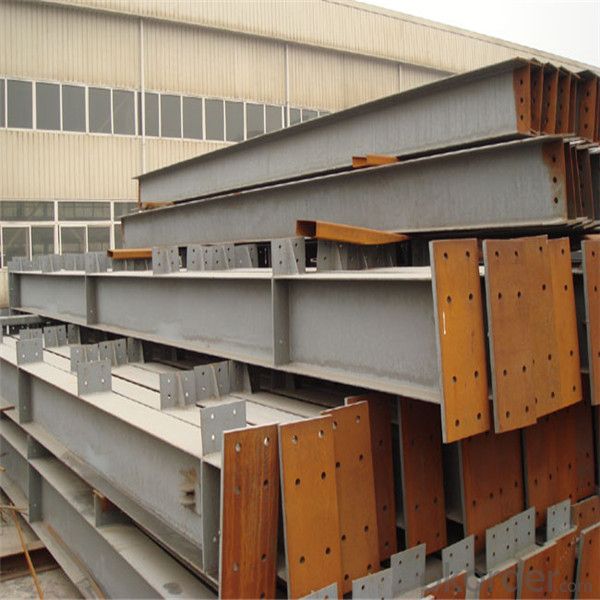
Products Description
Description | High Frenquency Thin-walled H Beam | |
Product Name | H Beam | |
Specification | Height:75-500mm Width:50-250mm | |
Standard | GB700-1998,GB/T1591-1994 | |
Material | Q235B,Q345B | |
Application | a. Bridge and post structures in industry and civil use of steel construction. | |
Certificates | ISO,SGS,BV,TUV,Lloyd | |
MOQ | 20 tons or according to customers’ requirement. | |
Port of Delivery | Tianjin Port of China | |
Remarks | We can provide qualify goods,competitive price and speedy delivery |
Packaging & Delivery
Packaging Details: | Packed with waterproof paper and steel banding. |
Delivery Detail: | 15-25 |
FAQ
1. How can I get some samples?
We are honored to offer you samples. New clients are expected to pay for the courier cost. The samples are free for you.
2 Do you have any certificates?
Our products passed inspection of SGS, FDA, and CE Quality is priority! Every worker keeps the QC from the very beginning to the very end, Quality control department especially responsible for quality checking in each process.
3 Can your factory print or emboss my logo on the goods?
Yes, we can print or emboss the logo on the goods or their packing box.
4 What information should I let you know if I want to get a quotation?
1) The specification of products (length x width x thickness);
2) The temper and alloy.
3) The final product you will use to be made
4 It will be better if you can show us the pictures or design sketch. Samples will be best for clarifying. If not, we will recommend relevant products with details for reference.We usually produce goods based on customers
Samples or based on customers’ picture, logo, sizes etc.
- Q: Can steel H-beams be used for transmission towers?
- Yes, steel H-beams can be used for transmission towers. Steel H-beams are commonly used in the construction industry for various applications including bridges, buildings, and transmission towers. They are strong and durable, making them suitable for supporting heavy loads and withstanding harsh weather conditions. Additionally, steel H-beams can be easily fabricated and assembled, which makes them a cost-effective solution for constructing transmission towers.
- Q: What is the typical lifespan of steel H-beams?
- The typical lifespan of steel H-beams can vary depending on several factors such as the environment in which they are used, the quality of the steel, and the level of maintenance they receive. However, under normal conditions, steel H-beams are known for their durability and longevity. When properly designed, installed, and maintained, steel H-beams can have a lifespan of several decades or even longer. In many cases, they can last well over 50 years. This makes them a popular choice for structural applications in various industries, including construction, bridges, and infrastructure. To ensure the longevity of steel H-beams, it is essential to protect them from environmental factors that can accelerate corrosion, such as exposure to moisture, saltwater, chemicals, or extreme temperatures. Regular inspection and maintenance, including cleaning, repainting, and addressing any signs of damage or deterioration, can significantly extend their lifespan. It is important to note that the lifespan of steel H-beams can also be influenced by factors such as load capacity, stress levels, and the overall structural design. Therefore, it is crucial to consult with structural engineers and adhere to industry standards and guidelines to maximize their longevity. Overall, while the exact lifespan of steel H-beams may vary depending on specific circumstances, they are generally designed to provide reliable structural support for many years, making them a durable and long-lasting choice for various construction and infrastructure projects.
- Q: Can steel H-beams be used in solar panel mounting structures?
- Yes, steel H-beams can be used in solar panel mounting structures. They provide excellent structural support and durability, making them a suitable choice for supporting the weight of solar panels. Additionally, steel H-beams can withstand various weather conditions and offer flexibility in design and installation.
- Q: Can steel H-beams be used in sports arena structures?
- Yes, steel H-beams can be used in sports arena structures. Steel H-beams are commonly used in construction due to their strength, durability, and versatility. They provide excellent structural support and can withstand heavy loads, making them suitable for large-scale projects like sports arenas.
- Q: Can steel H-beams be used in the construction of commercial buildings?
- Yes, steel H-beams can be used in the construction of commercial buildings. These beams are commonly used in the construction industry due to their strength, durability, and ability to support heavy loads. They provide structural support and stability, making them suitable for commercial buildings that require robust and long-lasting construction materials.
- Q: Can steel H-beams be used for healthcare facilities?
- Yes, steel H-beams can be used for healthcare facilities. Steel H-beams are commonly used in construction due to their strength and durability, making them suitable for various building types, including healthcare facilities. They provide structural support, allowing for the creation of open and flexible spaces that can accommodate the specific needs of healthcare settings. Additionally, steel H-beams offer resistance to fire, pests, and weather conditions, making them a reliable choice for healthcare facility construction.
- Q: Are steel H-beams suitable for solar panel mounting structures?
- Yes, steel H-beams are suitable for solar panel mounting structures. They offer excellent strength and durability, making them an ideal choice for supporting the weight of solar panels. Additionally, steel H-beams can withstand various weather conditions, providing stability and longevity to the solar panel installation.
- Q: What are the safety considerations for steel H-beams in construction?
- Some of the safety considerations for steel H-beams in construction include proper handling and installation techniques, ensuring structural integrity, and adherence to load capacity guidelines. It is crucial to follow safety protocols during lifting, positioning, and connecting the beams to prevent accidents or structural failures. Regular inspections and maintenance are also necessary to identify any signs of damage or deterioration that could compromise the beams' safety.
- Q: Can steel H-beams be used in the construction of warehouses or storage facilities?
- Yes, steel H-beams can definitely be used in the construction of warehouses or storage facilities. Steel H-beams are widely used in the construction industry due to their high strength, durability, and versatility. They provide excellent structural support and can withstand heavy loads, making them suitable for large-scale industrial buildings like warehouses or storage facilities. H-beams are often used as columns or beams in the construction of the framework, providing stability and support to the structure. Additionally, steel H-beams offer various advantages such as ease of installation, fire resistance, and resistance to corrosion, making them an ideal choice for long-lasting and secure warehouse or storage facility construction.
- Q: What are the different types of connections used for steel H-beams to steel columns?
- Steel H-beams can be connected to steel columns using different types of connections. These connections play a vital role in ensuring structural stability and transferring loads between the members. Here are some commonly used types of connections: 1. Welded Connections: H-beams and steel columns can be joined together by welding. This method involves using electric arcs or other welding techniques to fuse the ends of the beams and columns. Welded connections offer high strength and stiffness, effectively transferring loads. 2. Bolted Connections: Another method is using bolts and nuts to connect H-beams to steel columns. This involves drilling holes in the flanges or webs of the beams and columns, then inserting and tightening bolts to create the connection. Bolted connections are flexible and easy to install, making them popular in construction projects. 3. Riveted Connections: Riveting is an older method where steel rivets are used to join beams and columns. The rivets are heated and driven through pre-drilled holes, creating a permanent connection. While not commonly used nowadays, riveted connections can still be found in older structures. 4. Moment Connections: Moment connections are designed to transfer bending moments between H-beams and columns, particularly in situations with significant vertical and horizontal loads. These connections can be achieved through welding or bolting, providing enhanced rigidity and resistance against lateral forces. 5. Shear Connections: Shear connections primarily transfer shear forces between H-beams and columns, resisting horizontal forces parallel to the beams' length. These connections can be made through welding or bolting, ensuring proper transfer of shear forces between the members. It's important to consider various factors, such as structural design, loads, and project requirements, when determining the specific type of connection for steel H-beams to steel columns.
Send your message to us
Hot Dip Galvanized H-Steel Beams Supplier
- Loading Port:
- Dalian
- Payment Terms:
- TT OR LC
- Min Order Qty:
- 135 m.t
- Supply Capability:
- 150000 m.t/month
OKorder Service Pledge
OKorder Financial Service
Similar products
Hot products
Hot Searches
Related keywords
